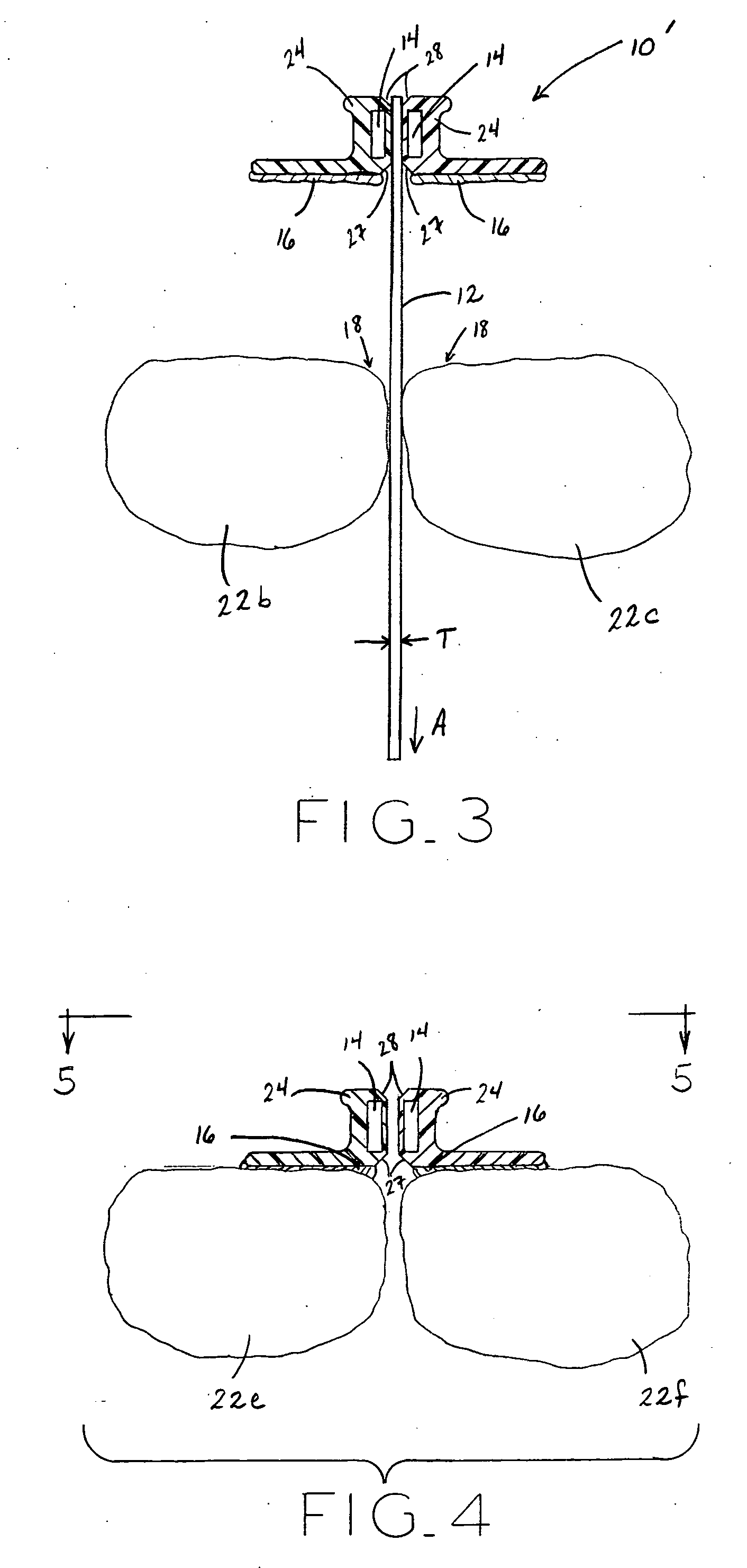Method and apparatus for positioning an orthodontic appliance
a technology for orthodontic appliances and positioning devices, applied in the field of orthodontics, can solve problems such as difficulty in obtaining the necessary precision of conventional orthodontic tools, such as forceps, and achieve the effect of improving the accuracy of orthodontic appliances
- Summary
- Abstract
- Description
- Claims
- Application Information
AI Technical Summary
Benefits of technology
Problems solved by technology
Method used
Image
Examples
Embodiment Construction
[0021] The present invention generally provides a method and apparatus for delivering an orthodontic appliance. Pairs of mutually attracted members are coupled together and carried on a delivery member with scribe marks to indicate the depth of the delivery member with respect to the teeth. The delivery member is anteriorly pulled between a pair of adjacent teeth, whereby the pairs of mutually attracted members contact the adjacent teeth and are subsequently affixed to the pair of adjacent teeth via an adhesive. The delivery member is then pulled clear of the adjacent teeth, leaving behind the mutually attracted members affixed to the adjacent teeth. The mutually attracted members will retain the adjacent teeth in their positions because of the mutual attraction therebetween.
[0022] Referring now to FIG. 1, orthodontic retainer system 10 is shown, including strip or delivery member 12 and mutually attracted dental modules 14. Mutually attracted dental modules 14 are releasably coupl...
PUM
 Login to View More
Login to View More Abstract
Description
Claims
Application Information
 Login to View More
Login to View More - R&D
- Intellectual Property
- Life Sciences
- Materials
- Tech Scout
- Unparalleled Data Quality
- Higher Quality Content
- 60% Fewer Hallucinations
Browse by: Latest US Patents, China's latest patents, Technical Efficacy Thesaurus, Application Domain, Technology Topic, Popular Technical Reports.
© 2025 PatSnap. All rights reserved.Legal|Privacy policy|Modern Slavery Act Transparency Statement|Sitemap|About US| Contact US: help@patsnap.com



